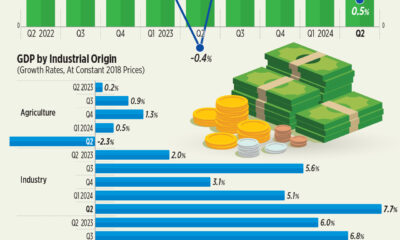Health
A growth mindset makes positive transitions possible for everyone

Transition with the intention of setting yourself and your team up for success.
Throughout our careers, we all go through a multitude of transitions that can impact ourselves, our careers and our colleagues. These transitions, which typically involve leaving our positions and workforce for a period of time, can include parental leave, illness, sabbaticals, secondments, educational experiences and more.
Those who embark on such journeys often experience “transition anxiety.” This is an innate emotional response that occurs when people face changes in life that push them out of their comfort zones and into a state of uncertainty, vulnerability, stress, fear of the unknown and even loss of identity. And it can surprise people.
Adopting a growth mindset can be a powerful tool for supporting yourself and others in transition. This is especially true during transitions for senior leaders, when their junior, manager, and director-level employees can take on new tasks, learn new skills, and grow into jobs beyond their current roles. While the transition will likely demand more from each employee, team members can grow and upskill together, and have the opportunity to “come out” to new tasks and roles.
When leaders and organizations prepare well for the transition, the doors of opportunity open, the benefits trickle down to everyone, and perceived and potential negatives take a back seat to progress.
Switching with intention sets teams up for success
It is important to recognize that Changes can have a negative impact on employees’ mental health and well-being, and to manage these situations with understanding and empathy. With the right perspective and tools, most leaders and team members will be able to calm these innate reactions and approach transitions positively, productively and methodically.
The power of purposeful and strategic action before and during the transition period is considerable. It is up to the leader in transition to ensure that the work gets done and that a growth mindset is prioritized.
6 best tips for leaders in transition
- Be attentive during preparation. Transitions are forcing leaders to analyze their teams, identify and fill gaps, and consider individual and team careers to best ensure business success and, just as importantly, support the mental health and well-being of their colleagues during their absence.
- Inspire team confidence and commitment. Leaders must clearly articulate how much they value their team members and demonstrate that by working together on a plan to support them through a successful transition, including in ways that are mutually beneficial. This shared process reduces employee anxiety about changing team roles and promotes psychological safety when the process is empathetic.
- Seek support and guidance from HR, leaders and managers. Even with a growth mindset, transitions can be stressful. Get input from experts and others who have successfully navigated other transition processes to help optimize the experience for everyone involved. Manage negative reactions where they may arise. In addition, simply sharing thoughts about the transition is also allowed relieve stress and offering solutions and perspectives that have not yet been considered. Don’t carry the burden alone.
- Acknowledge fear: Part of a growth mindset is recognizing, accepting, and becoming comfortable with the possibility of negative reactions to difficult events, including transition. In reality, embracing stress (in the right dose) can make people stronger and happier, helping them cope better in the long term.
- Communicate transparently. Open communication helps create a psychologically safe work environment where employees can take calculated risks, freely express concerns regarding any transition process, and resolve issues before a leader makes the move or leaves.
- Think about what comes next. This applies to both the transition leader and the team. Consider what the return to work after the transition will look like with a well-trained, efficient and energetic team. Sticking to pre-transition ways will not necessarily move the individual or organization forward, or – in many cases – support a growth mindset. For leaders in transition, this may mean giving up control and realigning their sense of purpose with a new role that the team may need upon their return.
Prioritize health and well-being during transitions
While effective leaders recognize that cultivating a growth mindset during times of transition is critical, so too is ensuring that everyone’s health and well-being is respected and supported. Some of the unintended consequences of transition – such as loss of professional and personal identity, loss of trust and loss of security – can be profound. To help employees cope with these challenges, leaders and companies should remind employees of the support mechanisms available to them, including counseling services, professional development opportunities and mentors.
We can all expect more transitions in the coming years and decades. New technologies such as artificial intelligence will emerge and become established, sabbaticals will become increasingly common and younger employees will change jobs and roles more often. Transitions can and should be a time of reflection, opportunity and evolution. Leaders, teams and companies that successfully emphasize and cultivate a growth mindset while providing health and wellness support to those who need it are best positioned to optimize the transition process.
When it comes to transitions, we must all strive to emerge healthy and transformed: stronger, more skilled and better able to meet future challenges.











